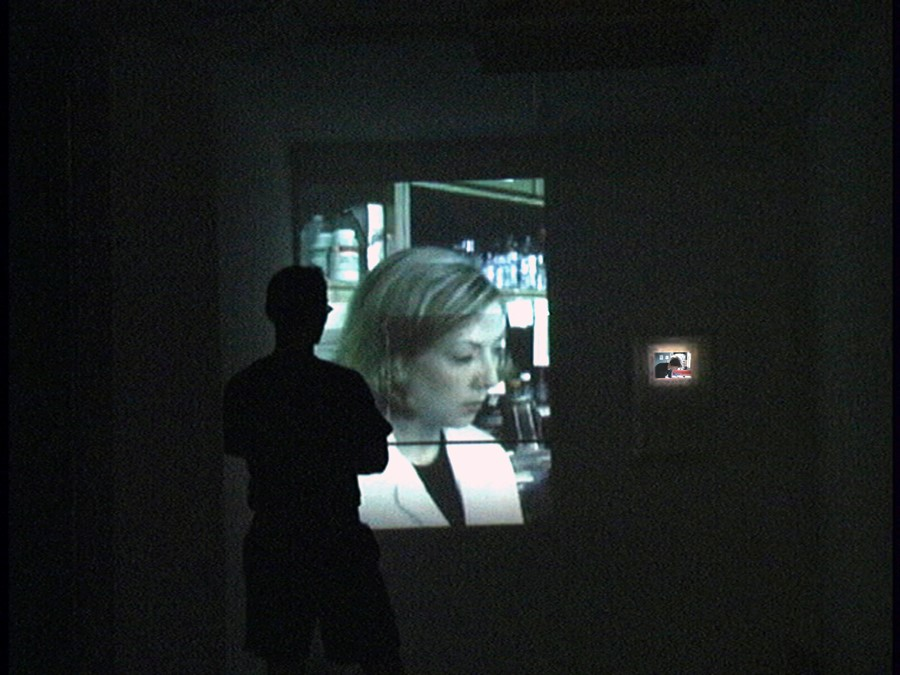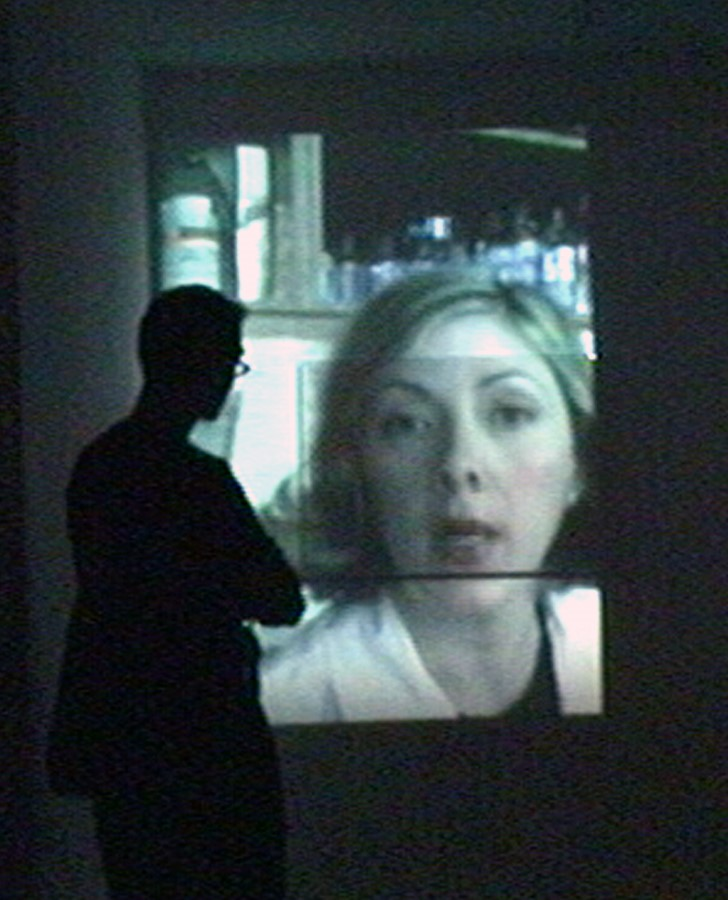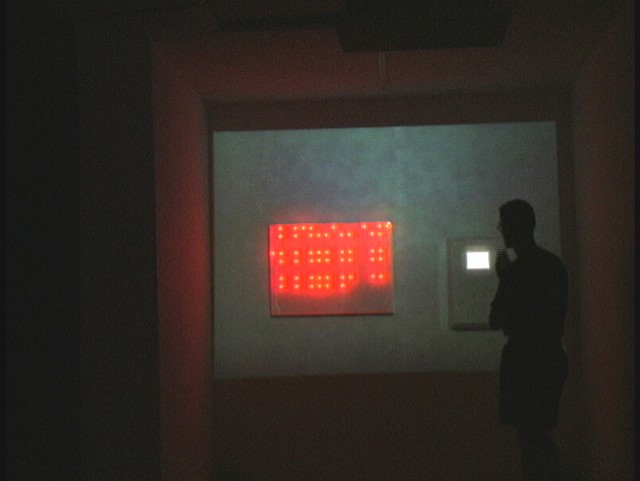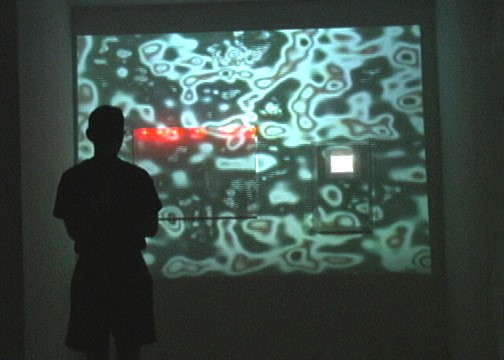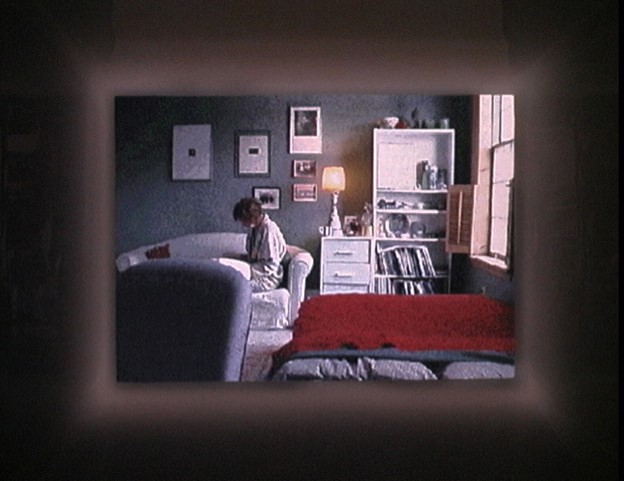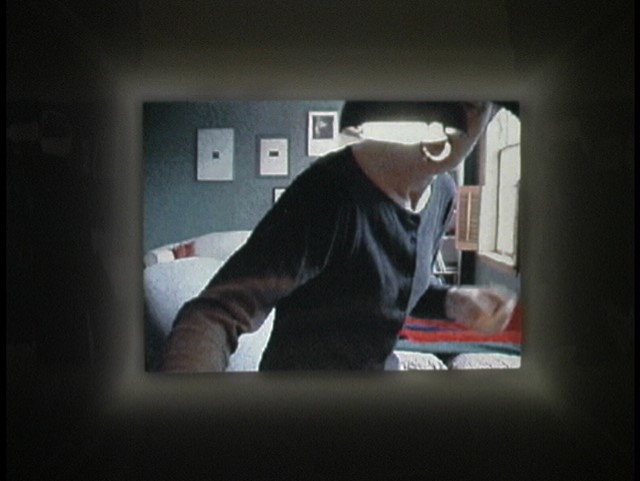UCBM (You could be me)
Nell Tenhaaf
April 7 - April 28, 1999
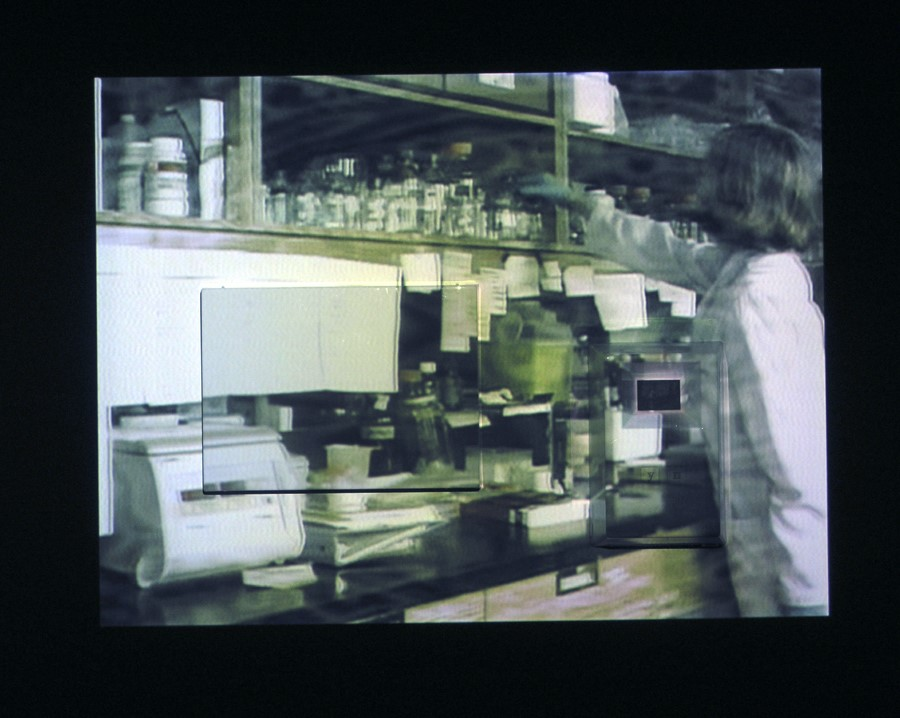
In Images festival, 1999
with: Jeff Mann, programming and electronics; Christine Martin on screen; Scott Draves, Bomb a-life graphics
UCBM is a viewer-activated video installation that offers a "test" of each interactant’s response to empathy that is mediated by the screen and by technoscience. A speaking female shown as a video projection solicits from viewers as much input and intimacy as she can get, wanting to make a portrait of who they are by assessing their willingness to relate. Each viewer is given feedback on how they did through voice, a light display of their “adaptation pattern”, and a fitness chart that compares them to other interactants.
UCBM borrows some of its methods and premises from artificial life research: a genetic algorithm (GA) is used both to generate the adaption pattern in LEDs, and as a method for assessing an empathy factor. The empathy score is calculated from a person’s speed of approach and their answers to three questions. Unbeknowst to the viewer, this information becomes a set of artificial genes that mutate and crossover to form offspring. Viewers with adaptive offspring pass their genes into the gene pool of previous and subsequent viewers, linking together a population of nine people before resetting.
The intention in foregrounding simulated empathy is neither to advocate nor critique more mediated relations with other humans. Rather, it is to create an art experience that embodies technoscientific knowledge and its narratives.








